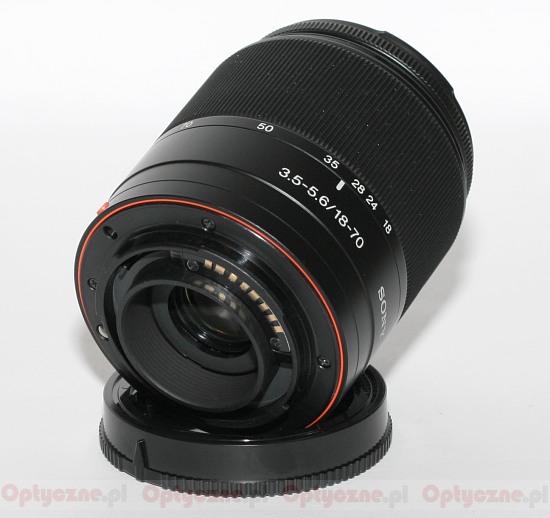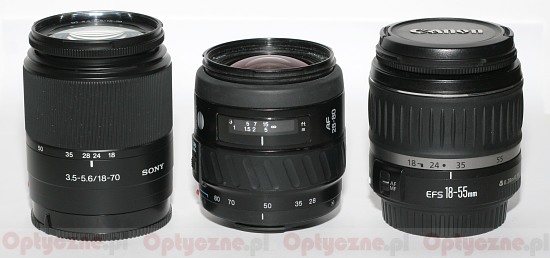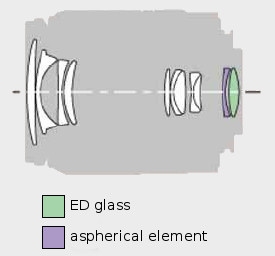Sony DT 18-70 mm f/3.5-5.6
3. Build quality
 |
 |
Please Support UsIf you enjoy our reviews and articles, and you want us to continue our work please, support our website by donating through PayPal. The funds are going to be used for paying our editorial team, renting servers, and equipping our testing studio; only that way we will be able to continue providing you interesting content for free. |
- - - - - - - - - - - - - - - - - - - - - - - - - - - - - - - - - - - - - - - - - - - - - - - -
Inside the housing we can find a construction consisting of 11 elements in 9 groups. The number is exactly the same as in the Canon EF-S 18-55 mm but significantly lower than in the case of the Nikkor 18-70 mm, which consists of as many as 15 elements. Sony, like Nikon and contrary to Canon, made use of low-dispersion ED and aspherical elements. It was supposed to ensure good control of spherical and off-axis aberrations as well.

Additionally the lens features an aperture with seven diaphragm blades, which, depending on the focal length, can be closed down to f/22-f/36 and a rotating thread onto which we can screw a filter 55 mm in diameter.
The Sony 18-70 mm can’t show an outstanding performance as a macro device because its minimum focus amounts to 38 cm. That value, though, is exactly the same as in the case of the Nikkor 18-70 mm and as many as 10 cm more than in the case of other 18-55 mm kit lenses.






